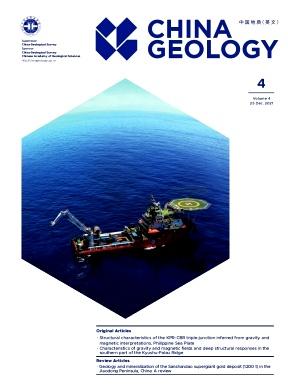Evaluating the hydrocarbon generation potential of the Paleocene–Eocene carbonaceous rocks in the Barmer and Bikaner-Nagaur Basins, western Rajasthan, India
IF 4.7
3区 地球科学
Q1 GEOSCIENCES, MULTIDISCIPLINARY
引用次数: 0
Abstract
The Bikaner-Nagaur and Barmer Basins (Rajasthan) are the most important petroliferous sedimentary basins in India. For over a decade, the exploration and extraction of hydrocarbons in these basins. Paleocene-Eocene age rocks bear organic-rich sediments in these basins, including lignite and carbonaceous shale deposits. The present research investigates the source rock properties, petroleum potential and thermal maturity of the carbonaceous shale partings from the lignite mines of Gurha (Bikaner-Nagaur Basin) and Kapurdi (Barmer Basin) using petrographical and geochemical tools. The carbonaceous shales have high organic matter (OM), with considerable total organic carbon (TOC) contents ranging from 13% to 39%. Furthermore, they contain hydrogen-rich kerogen, including types II and II/III, as evidenced by the Rock-Eval and elemental analysis results. The existence of these kerogen types indicates the abundance of reactive (vitrinite and liptinite) macerals. However, the carbonaceous shales from the Bikaner–Nagaur Basin have oil generation potentials, with a high hydrogen index (up to 516 mg HC/g TOC) and a H/C ratio (up to 1.5) along with a significant presence of oil-prone liptinitic macerals. Apart from the geochemical and petrological results, the studied shales have low huminite reflectance (0.31%–0.48%), maximum temperature (S2 peak; Tmax) between 419°C and 429°C, and low production index values (PI: 0.01–0.03). These results indicate that these carbonaceous shales contain immature OM, and thereby, they cannot yet release commercial amount of oil. This immaturity level in the studied outcrop section is due to the shallow burial depth. Geochemical proxies further indicate the presence of both oil and gas-prone source rocks.
印度拉贾斯坦邦西部Barmer和Bikaner-Nagaur盆地古新世-始新世碳质岩生烃潜力评价
Bikaner-Nagaur和Barmer盆地(拉贾斯坦邦)是印度最重要的含油气沉积盆地。十多年来,在这些盆地勘探和开采碳氢化合物。盆地中古新世—始新世时期的岩石发育富有机质沉积,包括褐煤和碳质页岩沉积。利用岩石学和地球化学工具研究了古哈(比卡内尔-纳戈尔盆地)和卡普尔迪(巴默尔盆地)褐煤矿区碳质页岩组分的烃源岩性质、含油气潜力和热成熟度。含碳页岩有机质(OM)含量较高,总有机碳(TOC)含量在13% ~ 39%之间。岩石分析和元素分析结果表明,它们含有富氢干酪根,包括II型和II/III型。这些干酪根类型的存在表明反应性(镜质组和脂质组)矿物丰富。而Bikaner-Nagaur盆地的碳质页岩具有较高的氢指数(高达516 mg HC/g TOC)和H/C比值(高达1.5)以及大量易油的脂质矿物的存在,具有生油潜力。除地球化学和岩石学结果外,研究页岩具有低腐殖岩反射率(0.31% ~ 0.48%),最高温度(S2峰);Tmax)在419 ~ 429℃之间,生产指数值较低(PI: 0.01 ~ 0.03)。这些结果表明,这些碳质页岩含有未成熟的有机质,因此还不能释放出商业量的石油。研究露头剖面的这种不成熟程度是由于埋深浅造成的。地球化学指标进一步表明,烃源岩既有油气倾向,也有油气倾向。
本文章由计算机程序翻译,如有差异,请以英文原文为准。
求助全文
约1分钟内获得全文
求助全文

 求助内容:
求助内容: 应助结果提醒方式:
应助结果提醒方式:


